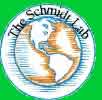|
|
Studying
biodegradation in soil presents unique research challenges because of the
heterogeneity of soil with respect to biological niches and the spatial
distribution and availability of pollutants. A variety of complex biodegradation
patterns result from physical interactions between pollutants and the soil
matrix and from biological interactions among different organisms. The purpose
of this chapter is to give an overview of methods to study the biodegradation
of chemicals in soil microcosms and bioreactors. There have been several
recent reviews of methods used to study the activity of soil microorganisms
in microcosms. For example, Burns reviewed the literature on microcosm studies
that “explicitly attempted to understand how soil systems function
in the field.” In contrast, this chapter will focus only on the common
methods used to study biodegradation processes in soil. Attempts have been
made to standardize the methods used by researchers in this area, and we
will refer to these standard methods whenever possible. Most of the methods
described are used to determine the biodegradation potential of compounds
in soil or are used to elucidate the effects of isolated variables, such
as temperature, soil moisture, or sorption, on the kinetics of biodegradation.
We will also discuss methods used to scale up soil microcosms to treat larger
volumes of contaminated soil. |
|
|







